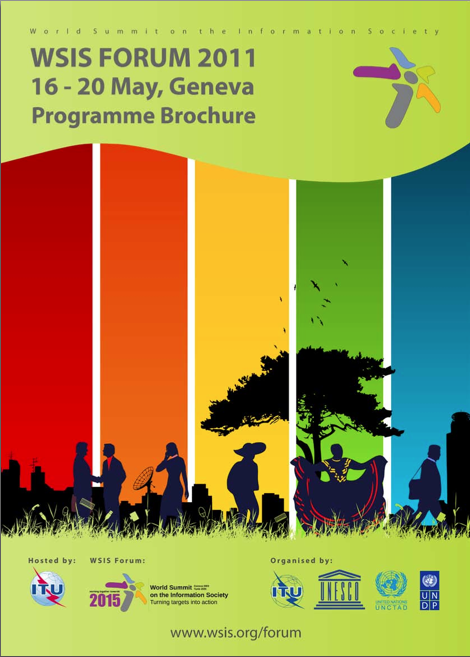For the second consecutive year, the ICT4Peace Foundation was invited to host a thematic Workshop at the annual WSIS forum in Geneva. Under the title Mainstreaming Crisis Mappers and Social Media in Crisis on Wednesday 18 May, the Foundation had a panel discussion that was also live broadcast on the Internet. WSIS has given this link as the temporary archive of the live video feed.
The submissions of the panelists and our live tweeting clearly demonstrated the degree to which social media and ICTs had progressed in relief work even over one year.
Panelists from UN agencies repeatedly noted that web based social networks and ICTs were an integral part of their operations, including content from Twitter and Facebook. Stressing the need for accountability, many suggested that new tools and mobiles helped more than before victims help themselves and each other after a disaster. And yet challenges regarding adoption were also placed for consideration including the fact that it was not always easy to use new technologies in the aftermath of a large scale sudden onset disaster, or in other crisis situations. A key driver of the UN CiM process supported by the ICT4Peace Foundation – the availability of Common Operations Datasets (CODs) – was also underscored by panelists, who said that not all data was the same, who noted that how best to collect, analyse, visualise data as well categorise it remained key challenges for the UN system as well as other crisis mapping actors. Panelists also brought out a gendered critique of new technologies, suggesting that it was important to look at who actually owned and had access to ICTs that could be of use post-disaster as well as for disaster preparedness.
Panelists also stressed the issue of accountability and the responsibility to asses new ICT tools and platforms from the perspectives of the disaster affected community, with humility and eschewing what is a tendency amongst actors in relief work to take credit for when things go right, and disavow responsibility for when expectations are not met, go unheeded and in some cases, threaten lives.
Speakers:
- Tom de Groeve, EC Joint Research Center
- Andreas Wigger, ICRC
- David Kaatrud, WFP
- Andrew Alspach, UN OCHA
- Kimberly Roberson, UNHCR
- Sanjana Hattotuwa, ICT4Peace Foundation and TED Fellow
- Daniel Stauffacher, ICT4Peace Foundation, Moderator
Background note for the panel discussion
ICT is a huge enabler and source of empowerment, allowing individuals to take some, albeit limited, control of their own destiny within the chaotic framework of a crisis, natural disaster or post-conflict situation. From the SMS/text messages of Haitian earthquake victims and refugees in Darfur to Rwandan farmers checking grain prices on-line, ICT provides a tool with which individuals can share and obtain information. In some cases this can mean the difference between life and death, economic survival or abject poverty. In turn, the compilation of all these pieces of data on crowd-sourcing platforms and other databases provides an overall picture of a given situation, which can be very useful to humanitarian responders and governments in times of crises, war, conflict and state-building.
Approaching humanitarian relief, with an increasing emphasis on ICT, brings with it hope for a better future but at the same time significant challenges. How can the humanitarian community and other actors physically assess the mountains of data that come in? What steps does the humanitarian community need to take in order to manage this process? How can the accuracy of the information coming into a given platform be validated, in particular in conflict situations where misinformation is often used as a weapon? How can individuals in conflict situations, who provide valuable information, be protected?
Another important series of issues also need to be discussed about the responsibility and role of technology providers. What responsibility do technology platform providers have? What happens when collected information cannot be acted on? How can the links between the information gathering and implementation be improved? How can responders ensure that new systems uphold the “do no harm” principle of the humanitarian community? What criteria exist, or should exist, for ICT providers (including crisis mappers and social media) to determine which crises they should address or “map”?
At the end of the day, the question remains as to whether or not we will be able to use improved ICT in such a way so as to significantly improve the situation for victims of crises. Does increased ICT ability and use really mean progress and reduced loss of life? To date, the jury is out but at a minimum new technology provides an opportunity to re-think how we respond to crises, how we prepare communities for disasters and we manage conflict and post-conflict situations.

